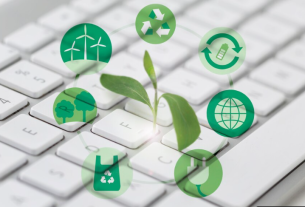As you cut up your Christmas tree for recycling in your yard waste cart or pack up your artificial tree for storage, you might be considering switching from a real to a fake tree, or vice versa, next year.
If you’re questioning the environmental impact of this decision, finding impartial, data-driven analysis is important.
A new tool in Omni Calculator, at www.omnicalculator.com, an online app with a philosophy of rationalism and calculators for analysis, may help you answer this and other questions. Answers to some queries, however, may require scrutiny of underlying data.
“We perceive the world through the lens of our emotions, feelings and intuition,” yet decisions are best made “free from nonscientific influence,” Maria Kluziak, a spokesperson for the app, told me via email.
As with thousands of other tools on the Omni Calculator website, with the app’s new Christmas Tree Footprint Calculator, users customize inputs to their situation and receive results.
Just as the app helps users compare investments based on interest rates and the time value of money, or determine if they are overweight based on body mass index calculations, the app starts with questions such as miles driven to buy a tree and the tree’s origin and size.
Plugging in data I considered typical for Ventura County, the program concluded an artificial tree must be reused seven times to bring its carbon impact down to the level of a tree trucked to Ventura County from Oregon.
There was only one problem with this conclusion: It was based on incorrect assumptions about Ventura County’s method for recycling trees.
As I found in the tool’s disclosures and confirmed in follow-up emails, the Omni Calculator researchers were counting incineration with energy recovery as “recycling.”
Years ago, cogeneration was common, with wood burned in cement kilns and other high-temperature uses. Now, recycling through incineration with energy recovery is still common elsewhere in the United States and even more common elsewhere in the world, but it is rare in California.
Trees collected from Ventura County curbside programs are converted into mulch and compost by Peach Hill Soils and by Agromin.
In response to this input, Omni Calculator researchers altered their app to provide an option for recycling without incineration. Consequently, the number of artificial tree reuses required to equal the impact of a cut tree skyrocketed to 14.
Again, checking Omni researchers’ assumptions, I found they had counted all trees as being composted and the compost replacing fertilizer. Neither of these assumptions is correct, so I contacted them again.
Being dedicated rationalists, they seemed genuinely grateful for corrections and are currently again altering the app.
No doubt, they will eventually allow data input customization sufficient to account for the efficient mulch-making operations of Ventura County. The answer will likely be somewhere between seven and 14 reuses of an artificial tree to equal the impact of a cut tree.
A 2022 “Guide to Christmas Trees” issued by the American Christmas Tree Association says artificial trees are used for an average of 10 years, but most are guaranteed for 20 years.
The tree association in 2018 sponsored a life-cycle assessment that concluded using an artificial tree for only five Christmas seasons enabled it to pass an environmental break-even point where manufactured trees become environmentally preferable to purchasing a real tree each year.
However, the study is unconvincing to many, partly because the association sponsoring the effort is comprised of people in the business of importing and selling artificial trees.
In 2019, Jami Warner, the group’s executive director, responded to my questions about the objectivity of the study by pointing out, in an email: “We are certainly not the only organization to sponsor a life cycle assessment of its own product. I think it’s pretty standard.”
As with other environmental decisions, data is crucial for rational action. Assumptions behind the data must be examined.
However, actual decisions about issues such as Christmas tree purchases seem more likely to be influenced by factors such as family traditions.
David Goldstein, an environmental resource analyst with the Ventura County Public Works Agency, can be reached at 805-658-4312 or [email protected].

